
-
Find the right food for your petTake this quiz to see which food may be the best for your furry friend.Find the right food for your petTake this quiz to see which food may be the best for your furry friend.Featured products
 Adult Small & Mini Lamb Meal & Brown Rice Recipe Dog Food
Adult Small & Mini Lamb Meal & Brown Rice Recipe Dog FoodFor the faster metabolism of Small & Mini dogs
Shop Now Hill's Science Diet Adult Oral Care Chicken, Brown Rice & Barley Recipe Dog Food
Hill's Science Diet Adult Oral Care Chicken, Brown Rice & Barley Recipe Dog FoodClinically proven kibble technology to reduce plaque & tartar build-up
Shop Now Adult 7+ Small & Mini Chicken & Brown Rice Recipe Dog Food
Adult 7+ Small & Mini Chicken & Brown Rice Recipe Dog FoodFor the unique nutritional needs of mature Small & Mini dogs
Shop NowFeatured products Hill's Science Diet Adult Sensitive Stomach & Skin Dog Food
Hill's Science Diet Adult Sensitive Stomach & Skin Dog FoodHighly digestible recipe, gentle on stomachs. Nourishes skin & promotes a lustrous coat
Shop Now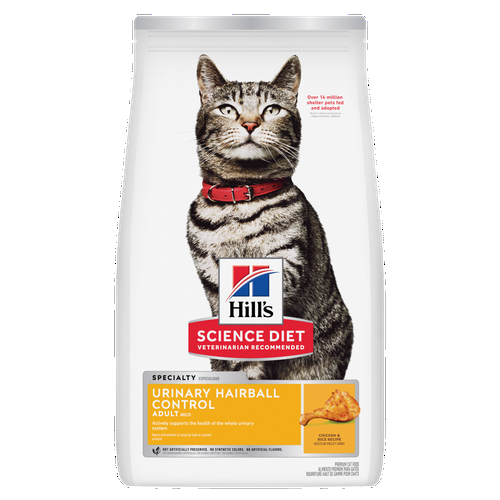 Adult Urinary Hairball Control Chicken & Rice Recipe Cat Food
Adult Urinary Hairball Control Chicken & Rice Recipe Cat FoodActively supports the health of the whole urinary system
Shop Now Adult Indoor Chicken Recipe Cat Food
Adult Indoor Chicken Recipe Cat FoodSupports energy level and beautiful fur in indoor cats
Shop Now -
Featured articles
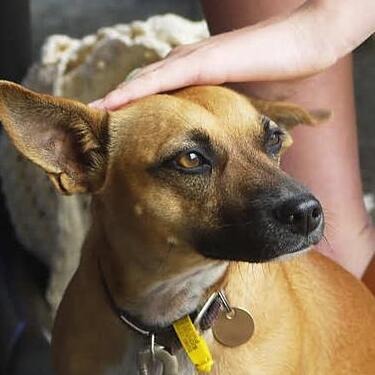 15 Pet-Friendly Cities Ideal for a US Road Trip
15 Pet-Friendly Cities Ideal for a US Road TripCheck out our list of pet-friendly U.S. cities that are excellent travel options, offering off-leash dog parks and pet-friendly restaurants & hotels.
Read More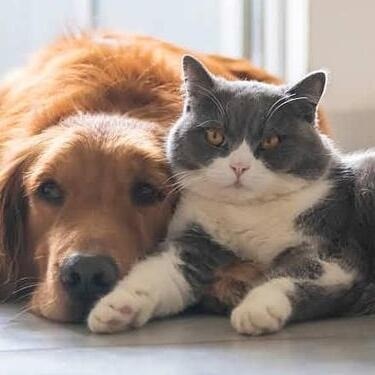 Easy DIY Dog & Cat Toys: Nine of Our Favorites
Easy DIY Dog & Cat Toys: Nine of Our FavoritesBrowse this comprehensive guide for several of our favorite DIY dog and cat toys that are sure to put a little pep in your pet's step.
Read More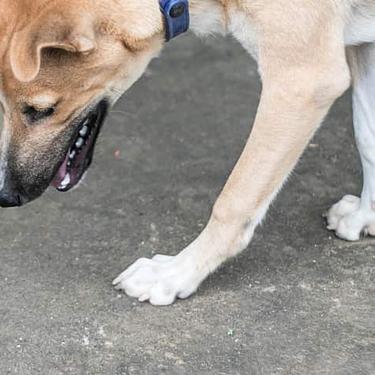 My Pet Ate a Lizard — What Should I Do?
My Pet Ate a Lizard — What Should I Do?Learn what to do if your pet eats a lizard, including whether they can be toxic and symptoms to keep an eye on when they've swallowed one.
Read More -


Cats are solitary hunters and eaters.
Among all cat species, only lions hunt and eat together. In a natural setting, cats will hunt and eat 10 or more small meals per day. One way to mimic this natural hunting behavior is to use a ‘foraging feeder’ or ‘food puzzle’ where your cat has to interact with the feeder to get small pieces of food You can also hide small amounts of dry Science Diet cat food around the house for your cat to seek out and eat, perhaps in shallow plastic containers or egg cartons.
 For people, eating is a social event, but because cats are solitary hunters, most would prefer to eat alone. This means when one cat in a home must be fed separately from the others, she is probably happier. Although they prefer to eat alone, healthy cats may not mind the presence of others at feeding time. However, in times of illness or stress, this tolerance may decrease. It is also important to know that the behaviors shown by your cat when you come home (e.g., meowing, rubbing on your legs, seeking attention) is a greeting behavior and is not a request for cat food. You should reward this behavior with attention such as petting or play, but feed your cat later.
For people, eating is a social event, but because cats are solitary hunters, most would prefer to eat alone. This means when one cat in a home must be fed separately from the others, she is probably happier. Although they prefer to eat alone, healthy cats may not mind the presence of others at feeding time. However, in times of illness or stress, this tolerance may decrease. It is also important to know that the behaviors shown by your cat when you come home (e.g., meowing, rubbing on your legs, seeking attention) is a greeting behavior and is not a request for cat food. You should reward this behavior with attention such as petting or play, but feed your cat later.
Temperature matters
As a hunter, cats prefer food that is close to their own body temperature (about 101° F/ 38° C). If you are taking canned cat food from the refrigerator, it should be warmed in the microwave (and stirred well) or warmed by the addition of some hot water.
Feeding behavior differences:
| Cat | Dog |
| Strict carnivore (must have animal source protein in their diet, but also able to use many nutrients from plants) | Omnivore (diet of plant and animal sources) |
| 10 or more small meals/day | 1-3 larger meals/day |
| Will hunt and eat at any time of day or night | Hunt and eat during daylight |
| No social value to eating | Eating has social value |
| 1-3 larger meals/day |


Tasty Tips
Mealtime is a special time for cats.
Feeding not only satisfies a cat’s abundant energy needs, but also provides her with the right nutrients she needs to stay healthy and strong. Although some cats have the ability to regulate their food intake, others will overindulge or have difficulty eating around other cats.
Simple guidelines for feeding your cat
- Feeding (food and water), sleeping/resting, and litter box areas should be separate from each other
- Ideally each cat should have its own food and water ‘station’, preferably in a quiet, low traffic place where your cat likes to spend time
- Water bowls should be wide and shallow; water should be fresh daily; some cats prefer to drink from a dripping faucet or a water fountain
- Many cats eat more readily from shallow bowls or plates so their whiskers don’t touch the sides
- Ideally, place food and water bowls separate from each other
- Food and water dishes should be kept clean
- Measure the cat food allotment for each cat according to the amount recommended by your veterinarian; monitor daily cat food intake and appetite
Do you have multiple cats in your household? Learn about feeding multiple cats.


One of our staff authors prepared this article for you
Related products
Related articles
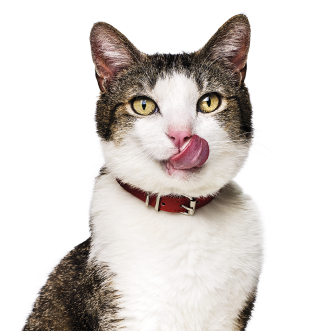
Put your cat on a diet without them knowing
Our low calorie formula helps you control your cat's weight. It's packed with high-quality protein for building lean muscles, and made with purposeful ingredients for a flavorful, nutritious meal. Clinically proven antioxidants, Vitamin C+E, help promote a healthy immune system.
Put your cat on a diet without them knowing
Our low calorie formula helps you control your cat's weight. It's packed with high-quality protein for building lean muscles, and made with purposeful ingredients for a flavorful, nutritious meal. Clinically proven antioxidants, Vitamin C+E, help promote a healthy immune system.

